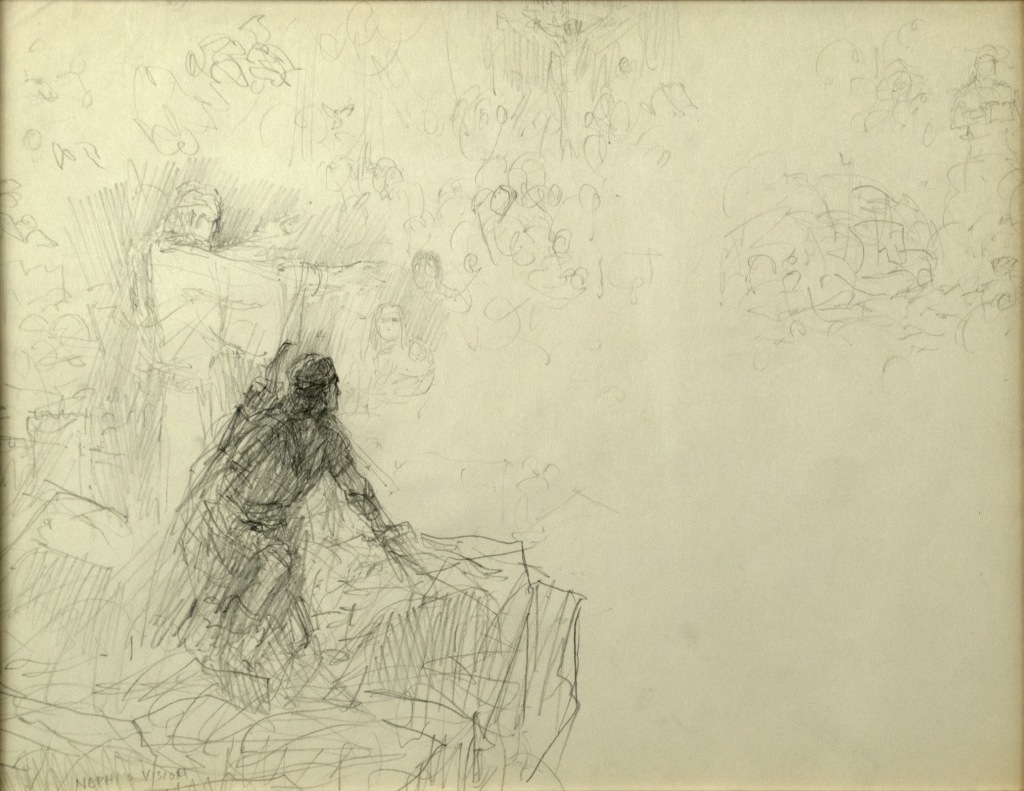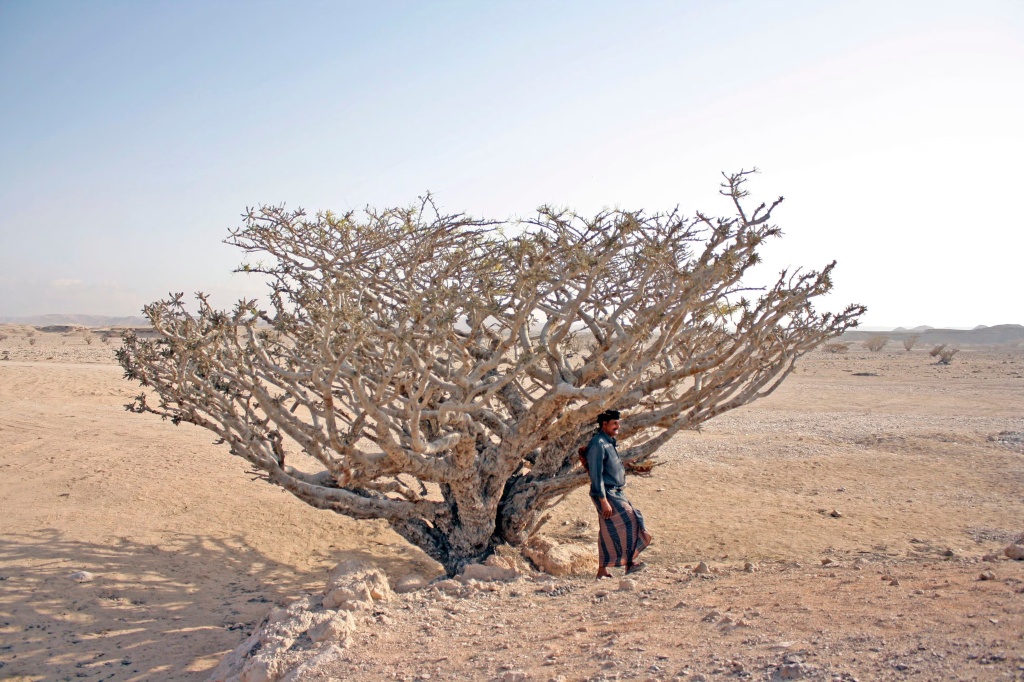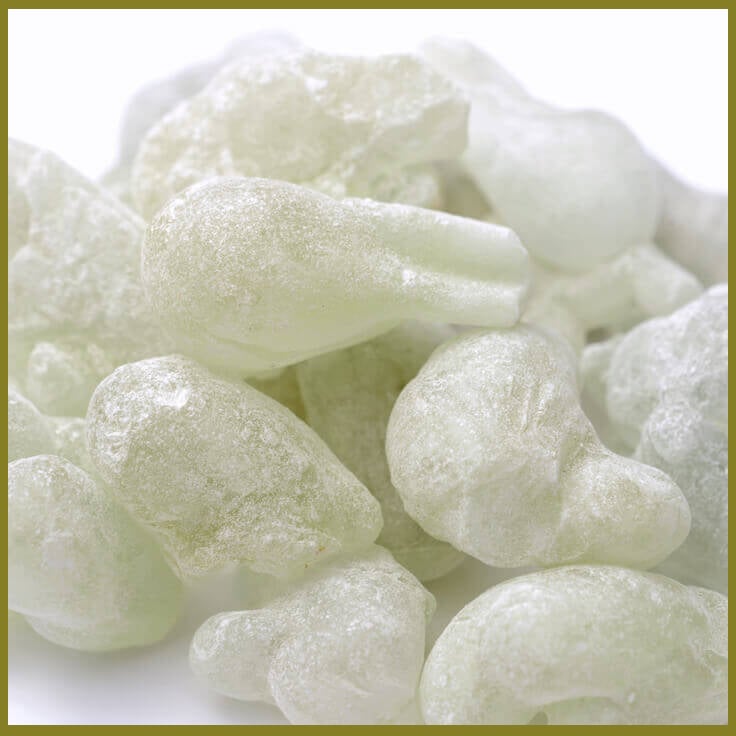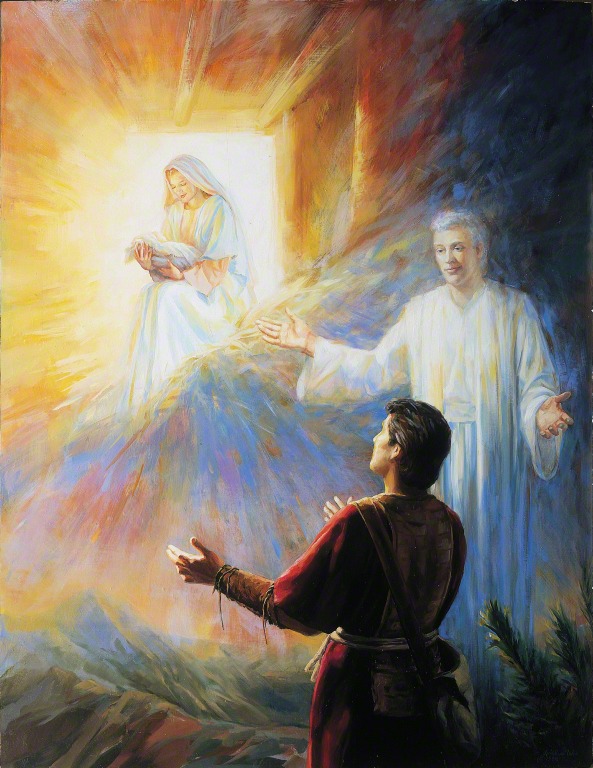
1-2, I had desired to know…Spirit said unto me, compare the personage who responds to Nephi’s desire with the one who responded to Lehi (1 Nephi 1:5–6). Are they the same being? How does Nephi’s desire to know what his father had seen (see 1 Nephi 10:17), presumably a desire expressed in prayer, differ from his prayer in 1 Nephi 2:16?
2, 10 what desirest thou, for my part, the most important text in the Temple is “What is wanted?” Christ asks the same question of Solomon (1 Kgs 3:5; 2 Chr 1:7), John (D&C 7:1), and the Nephite Twelve (3 Ne 28:1). God himself asks us that question at the veil, as if to tell us that it is the deepest desires of our hearts that will determine our destiny. As the race of Gods, agency (our will) is our most superhuman power, and in the end, we get what we want most (see Alma 40:3-7 where Alma teaches this doctrine clearest. Like, really go there and read it. It will blow your mind). It fascinates me that this is the first question the angel asks Nephi (twice), and the first God asks us when we meet him at the veil in the Temple.
6 Hosanna to the Lord, Having asked Nephi what he wants and what he believes, the Spirit then praises God before proceeding with the revelation. Why?
7 after thou has beheld the tree…thou shalt also behold a man, the first intimation that the Tree represents Christ (12:6), though the angel never actually tells Nephi that, and that’s probably because the symbolism of the Tree is so much more than any 1:1 comparison. It’s the Tree of Life, eternal life, the joy of the saints, the Kingdom of God, etc. (Psalm 1:1-3).

8 whiteness thereof, Nephi’s description of the beauty is even more explicit than his father’s. In Arabic, the word for white means ‘good character,’ ‘most respectedf,’ ‘happy,’ ‘prosperous,’ (think Moscow ‘White Nights’), ‘beneficence,’ ‘power,’ and ‘glory.’ The whiteness of the tree can be associated with the white light surrounding personages of divine power and glory (as in Matt. 17:2; 3 Ne. 19:25; JSH 1:32). The celestial glory manifests itself on this earth only in terms of light and whiteness. This is the context in which we should see the whiteness of the tree and the fruit. Consequently, it becomes apparent why Lehi and Nephi immediately felt drawn to it; it likely spoke directly to their soul of the celestial world.

11-21, To know the interpretation thereof…Look!, the angel doesn’t answer Nephi’s question directly, but instead shows him Mary and the birth of her son; then he puts the question back to Nephi. This is good teaching ;).

13, a virgin, in the first instance, the angel seems to suggest that the Tree is not Jesus, but Mary; implying that the fruit is Jesus. As the Tree bears the fruit, so Jesus is the fruit of Mary’s womb. Note that just as Mary was “exceedingly fair and white,” “most beautiful and fair above all other virgins,” so was the tree’s beauty “far beyond, yea, exceeding of all beauty; and the whiteness thereof did exceed the whiteness of the driven snow.”
Scholar Dan Peterson wrote, “The tree in ancient Israel was associated with the goddess ‘Asherah’, God’s wife. Asherah seems to have been known and worshipped not only among the Canaanites but among the Israelites. Her veneration can be documented over a period extending from the conquest of Canaan in the second millennium before Christ to the fall of Jerusalem in 586 BC, the time of Lehi’s departure with his family from the Old World. Belief in Asherah seems, in fact, to have been a conservative position in ancient Israel. It was a later criticism of her that appears to have been a religious innovation. In fact, an image or symbol of Asherah stood in Solomon’s temple at Jerusalem for nearly two-thirds of its existence, until the reforms of King Josiah (who reigned from roughly 639 to 609 BC). This means that her presence in the temple extended into the lifetime of Lehi and perhaps even into the lifetime of Lehi’s son Nephi. Since that time, though, she has been fiercely suppressed. The symbol of Asherah that stood in the temple at Jerusalem was a sacred, sylized tree of life. Although Asherah remains imperfectly understood, and although we cannot be certain of all the details, it should be apparent by now why Nephi, an Israelite living at the end of the seventh and the beginning of the sixth century before Christ, might have recognized an answer to his question about a marvelous tree in the otherwise unexplained image of a virginal mother and her divine child. His perception seems to derive form precisely the pre-exilic Palestinian culture into which, the Book of Mormon tells us, Nephi had been born. [Daniel C. Peterson, “Nephi and His Asherah,” in Journal of Book of Mormon Studies 9/2 (2000): 15-25, 80-81]
16, 26 knowest thou the condescension of God, (condescension, GR kenosis) some have suggested that v16 refers to the Father while v26 refers to the Son—meaning that the Father came to earth to bear Jesus, and the Son came to earth to subject himself to the brutality of men (see v27-33). But it’s also the case that v16 intimates the Son himself shedding his Godhood to be born of Mary in the most humblest of circumstances. This verse, and this entire chapter, is summarized perfectly by Paul: “Let this mind be in you, which was also in Christ Jesus: Who, being in the form of God…made himself of no reputation, and took upon him the form of a servant, and was made in the likeness of men: And being found in fashion as a man, he humbled himself, and became obedient unto death, even the death of the cross.” (Phil 2:5-8; see also Rom 12:16; Gal 4:4-5).

What does this mean to me? It means that I have no business thinking I ever deserve any kind of respect from others. As Jesus, who was actually deserving of respect (even worship) “gave my back to the smiters, and my cheeks to them that plucked off the hair: I hid not my face from shame and spitting” (Isaiah 50:6), because of love, so I, in desiring to follow him and be as he was, should put my focus on loving and serving others and not ensuring anyone loves and serves me. It just doesn’t matter what others think of me or how they treat me; it’s all about how I love and treat others, as it was with Jesus. Incidentally, “con-descend” is literally to descend (come down from heaven) to be “with” (con means with in Latin). Jesus came down to be with us, to be at our sides, to suffer in like manner as we suffer (see Isaiah 53; Mosiah 14). King Benjamin later expounds on the condescension of God (Mosiah 3:5-9; see also 1 Ne 19:10; 2 Ne 9:5; Alma 7:10-13). “Mind not high things, but condescend to men of low estate,” said Paul (Rom 12:16).
22, it is the love of God, Nephi realizes what John realized, that God so loved the world that he gave his only begotten son…” (John 3:16). But how did he get that from what he saw?
which shedeth itself abroad, i.e. extends to all men.
24, many fall down at his feet and worship him, as did those who came to the tree (8:30).
32 Lamb of God…slain for the sins of the world, here the terminology “Lamb” now makes sense.
5 Elements of the Vision Interpreted (4 explicit, 1 implicit)
- 21-23, 25 the tree, the love of God, the Tree of Life (the one in Eden, thus God’s presence), and eternal life, which is “the greatest of all the gifts of God” (D&C 14:7) as the tree is the “most desirable of all.”
- 25 rod of Iron, word of God
- 25 fountain of living waters, the love of God, and Christ, of course, who is the Living Water (John 4:14), and the fountain of all righteousness (Ether 12:28). This water, along with its symbolic partner, the fruit (manna) recall the sacramental emblems (Jn 4:14; Jer 2:13). Also, the setting recalls Eden, where a river went out from a fountain (Gen 2:10; see also Jeremiah 2:13; John 4:14; and Revelation 22:1-2)
- 34-36 large & spacious building, the world and the wisdom thereof, the multitudes of the earth fighting against the apostles of the Lamb, the pride of the world
- 31 multitudes of people who were sick…healed by the power of the Lamb of God, as in Lehi’s visions there were multitudes pressing forward toward the tree and partaking of the fruit (8:21, 24, 30), so Nephi sees multitudes of people who were sick or incapacitated in some way (as we all are), going to the Savior where they were healed by his power. Thus to partake of the fruit is to be healed by Jesus.